In Objective-C such line
self.mainImageView.layer.cornerRadius = CGRectGetWidth(self.mainImageView.frame)/4.0f;
does its job, I tried it in Swift using analogy
self.mainImageView.layer.cornerRadius = CGRectGetWidth(self.mainImageView.frame)/4.0
and it doesn't change anything, the corners are the same as before. Moreover, Xcode does not show any syntax errors. Does Swift support any other way to reach this goal? I checked some other threads here and usually it's getting done in Swift in the way showed above.


